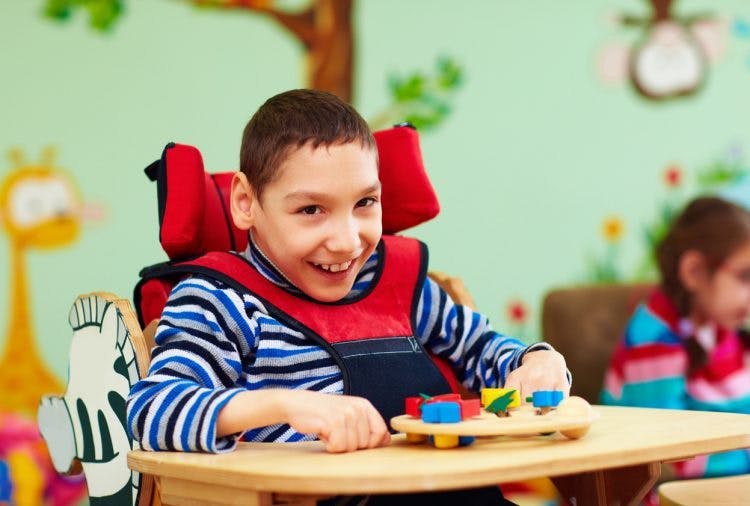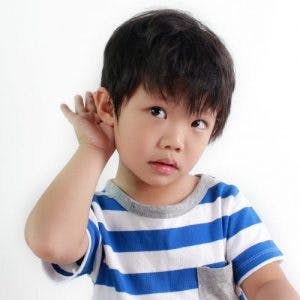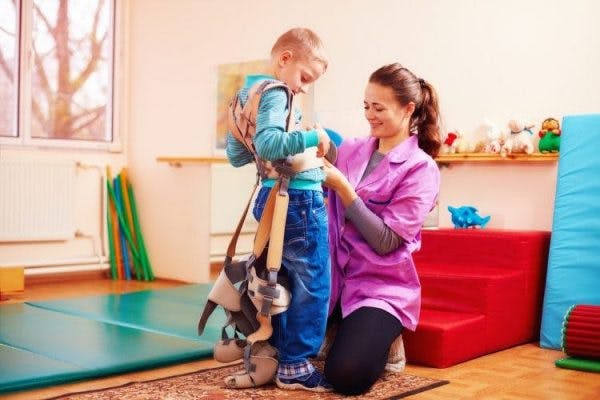Both cerebral palsy and autism are spectrum disorders, meaning that they involve a wide range of symptoms and severities.
As a result, no two cases of cerebral palsy or autism are the same. Many people with cerebral palsy can independently walk, and many people with autism can speak and are extremely intelligent.
This article will go over the differences and similarities between cerebral palsy and autism, as well as what to expect when they co-occur.
Differences Between Cerebral Palsy and Autism
Roughly 7% of children with cerebral palsy also have autism spectrum disorder. These 2 disorders are not related to one another but can co-occur and affect childhood development.
Below, we’ll compare and contrast these 2 conditions in greater detail.
Type of Disorder
Both cerebral palsy and autism are neurological disorders. However, the symptoms of each manifest differently. One results in physical impairments, while the other results in social and behavioral challenges.
Cerebral palsy is a motor disability, meaning that it affects an individual’s movements, balance, posture, and coordination.
In contrast, autism mainly affects one’s behavior and communication skills.
While individuals with cerebral palsy can have co-occurring social or behavioral impairments, they are not directly related to CP. Likewise, individuals with autism can experience motor impairments such as poor coordination, abnormal walking patterns, and seizures; however, they are not required for an autism diagnosis.
Causes
Another difference between cerebral palsy and autism is their causation.
Cerebral palsy is caused by damage to the developing brain before, during, or shortly after birth. It can occur as a result of premature birth, lack of oxygen, bleeding in the brain, infection, or head injury.
Multiple genetic and environmental factors can contribute to autism, but the exact cause is still unknown.
In terms of genetic factors, studies show that the chances of both identical twins having autism are about 36-95% while the chances of both fraternal twins having autism are about 31%. Parents of a child with autism have a 2-18% chance of having a second child with autism.
Other factors that increase the risk of having a child with autism include increased parental age, prenatal exposure to chemicals, premature birth, and oxygen deprivation. Some of these factors can also cause CP, which explains why the two conditions can co-occur.
Symptoms

Because cerebral palsy and autism are spectrum disorders, they present themselves differently in each individual.
Common symptoms of autism include:
- Poor use of eye contact, facial expressions, and gestures
- Difficulty understanding social situations and body language
- Uncontrollable outbursts
- Repetitive or obsessive behavior and movements
- Difficulties making friends and initiating/ sustaining conversations
- Delay in or complete lack of speech
- Being extremely particular about how things are done and resisting change
- Difficulties with transitions
- Hypersensitivity to sounds or touch
Common symptoms of cerebral palsy include:
- Abnormal gait
- Uncontrollable movements
- Poor posture
- Abnormal muscle tone
- Inability to speak, chew, or swallow
- Poor balance and coordination
Individuals can have any combination of these symptoms at varying severities.
If your child has both of these conditions, management can be complicated. For example, children with autism often prefer doing things on their own; however, motor impairments caused by cerebral palsy may restrict independence. This can be extremely frustrating and cause your child to act out.
In the following section, we’ll discuss how to manage these complications.
Want 19 pages of CP recovery tips in PDF form? Click here to download our free illustrated ebook now (link opens a pop up for uninterrupted reading)
Managing Cerebral Palsy and Autism

Cerebral palsy and autism spectrum disorder are lifelong conditions that cannot be reversed. However, by learning how to effectively communicate and complete functional activities, your child can significantly improve their quality of life.
Management interventions that can help develop your child’s physical abilities and social behaviors include:
- Physical therapy can help your child improve their strength, mobility, balance, and coordination through exercise.
- Occupational therapy can teach your child how to perform activities of daily living like using the bathroom or putting on clothes, and can also address sensory regulation.
- Speech therapy can teach your child how to communicate and socialize more effectively.
- Cognitive behavioral therapy can help your child transition out of unhealthy or destructive behaviors.
Because every case of cerebral palsy and autism is unique, a personalized approach to management that targets and develops your child’s specific weaknesses is essential.
Early intervention can significantly reduce the progression of motor impairments and improve cognitive skills. Children’s brains have more neuroplasticity and are therefore able to adapt and learn new skills much quicker than adults.
Cerebral Palsy vs Autism: Key Points
Cerebral palsy and autism spectrum disorder are two different, developmental conditions that can co-occur.
CP primarily affects movement while autism mostly affects communication, behavior, and social interactions. However, causes and symptoms can overlap.
We hope this article helped you understand the differences between these 2 conditions and how to manage them. Good luck!
Photos from top to bottom: iStock/olesiabilkei/KatarzynaBialasiewicz/LightFieldStudios










